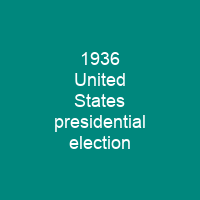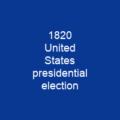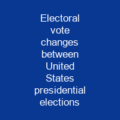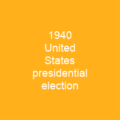The 1936 United States presidential election was the 38th quadrennial presidential election.Incumbent Democratic President Franklin D. Roosevelt defeated Republican Governor Alf Landon of Kansas. Roosevelt won the highest share of the popular and electoral vote since the largely uncontested 1820 election.
About 1936 United States presidential election in brief

The Republican National Convention held in Cleveland, Ohio, between June 9 and June 12, 1936. Although many candidates sought the Republican nomination, only two, Governor Landon and Senator William Borah, won their respective primaries. The populist Union Party nominated Congressman William Lemke for president. In other primaries, BreckInridge’s best showing was 15% in Maryland. The former President Herbert Hoover refused to actively disclaim any potential draft efforts but as the primaries drew near, it became obvious that he was unlikely to be nominated, and less likely to defeat Roosevelt in any rematch. Former President Charles G. Dawes and Senate Minority Leader Charles L. McNary were considered to be serious candidates, but both men quickly disclaimed any interest in running in running for the presidency. While former President Hoover was hopeful of making a comeback, but any such hopes were effectively ended as soon as the 1934 mid-term elections, which saw further losses by the Republicans and made clear the popularity of New Deal among the public. In the 1936 election, Roosevelt won 60. 8% of the popular vote, while Landon won 36. 5% and Lemke won just under 2%. Roosevelt took 60.8% of the popular vote. The 1936 election marked the first time in American history when a presidential candidate received over 500 electoral votes in a presidential election, though Lyndon Johnson would later win a slightly higher share of popular vote in 1964, after more electoral vote were added in 1964.
You want to know more about 1936 United States presidential election?
This page is based on the article 1936 United States presidential election published in Wikipedia (as of Dec. 06, 2020) and was automatically summarized using artificial intelligence.







